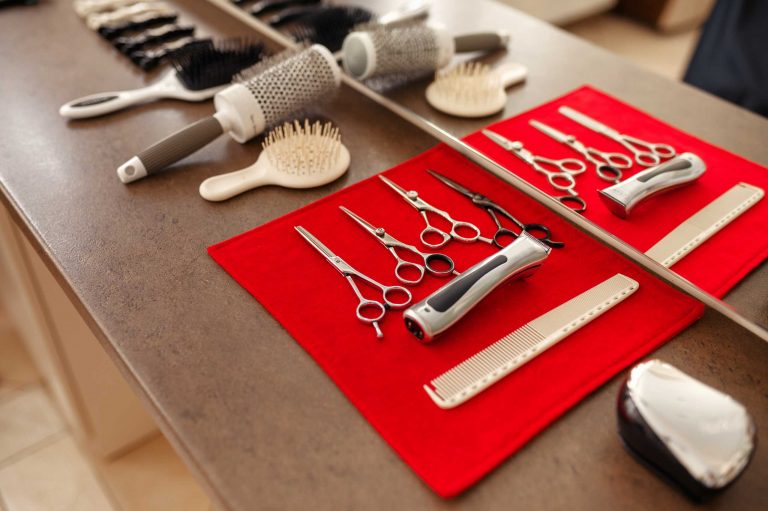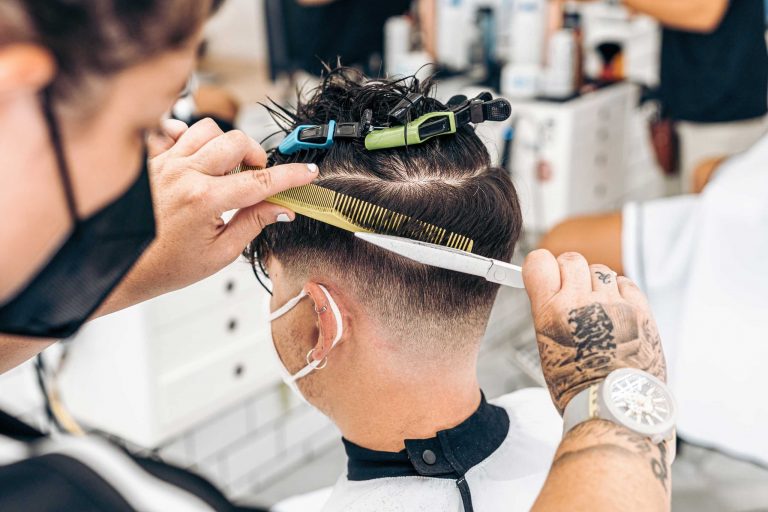Hair cutting is not merely a mechanical process of trimming hair; it is a dynamic combination of art and science. For every hairstylist aspiring to greatness, understanding both the technical and creative aspects of hair cutting is essential.
The Technical Foundation: Tools and Techniques
To begin mastering hair cutting, you must first be comfortable with your tools and the techniques involved:
- Cutting Tools:
Scissors, razors, texturizing shears — each tool has its unique function and effect on the hair’s texture and shape. - Cutting Angles:
The angle at which you hold your scissors or razor can drastically change the hairstyle’s final look. For instance:- 0° angle creates blunt, precise cuts
- 45° angle helps in layering and creating softness
- 90° angle is perfect for uniform length and volume
- Sectioning:
Proper sectioning of hair ensures control and accuracy. Dividing hair into sections allows stylists to focus on one area at a time, creating balanced and symmetrical cuts.
The Artistic Vision: Shape, Balance, and Customization
Hair cutting is an artistic process that goes beyond technique:
- Face Shape Analysis:
A key part of styling is understanding the client’s face shape — oval, round, square, heart-shaped — and tailoring the haircut to enhance their natural features. - Proportion and Balance:
Good haircuts maintain harmony between length, volume, and texture. Achieving balance ensures the hairstyle looks flattering from all angles. - Personal Expression:
Each haircut is a unique creation, reflecting the stylist’s vision and the client’s personality. Flexibility and creativity are essential to adapt styles to individual preferences.
Continuous Learning: Evolving with Trends and Feedback
The world of hairstyling is ever-changing, and staying relevant means embracing ongoing education:
- Industry Trends:
Regularly update your knowledge with the latest styles, cutting methods, and innovations. - Workshops and Advanced Courses:
Attend specialized training sessions to sharpen your skills and discover new techniques. - Client and Mentor Feedback:
Constructive criticism from clients and experienced professionals helps refine your technique and approach.
Practice Makes Perfect: Exercises to Hone Your Skills
- Practice different cutting angles on mannequins to understand their effects.
- Experiment with various tools to learn their impact on hair texture.
- Create face shape charts and practice designing haircuts that suit each shape.
- Record yourself working to observe posture, hand movement, and precision.
Why Cut Craft Academy?
At Cut Craft Academy, we provide a comprehensive curriculum combining theory, practical workshops, and creative projects. Our mentors guide you through every step, ensuring you graduate with both confidence and artistry.
Mastering hair cutting is a journey of passion, skill, and creativity. With dedication and the right guidance, you can turn hair into your canvas and craft styles that inspire.



